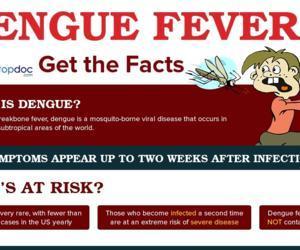Where Does Dengue Fever Commonly Occur?
Dengue Fever, once more common in tropical and subtropical climates has spread globally

The vector responsible for spreading dengue fever
The mosquito Aedes Aegypti is one of the most important insect vectors in the world. Dengue fever has garnered a lot of attention over the years, and is especially problematic in affected countries.
Areas most susceptible to dengue fever
You can see dengue commonly occurring in Central and South America, Eastern, Central and Western Africa, Indian, South East Asia, and finally and Northern Australia.
Dengue fever's global footprint
Around WWII, dengue fever occurred in the tropical areas bordering the equator like a belt around the world. Following immigration, the disease and its vector began to spread to new territories.
Frequency of dengue fever and dengue hemorrhagic fever
New eruptions of dengue are occurring every six to eight months, and dengue hemorrhagic fever seems to be triggered every three years in new areas it conquers. From being restricted to tropical and temperate zones, dengue has now become a global phenomenon.
Regional occurrences and global spread
It is now widely acknowledged that dengue fever is no longer confined to the tropical zones bordering temperate countries. There are some important reasons behind this shift.
A. The Aedes Aegypti mosquito is stronger and lives longer
The common mosquito has a lifespan of two to three days, the Aedes can survive for months. Unlike other mosquitoes, the female Aedes mosquito lays eggs individually, and not in clusters ensuring more eggs spread out, survive and hatch in inhospitable conditions. The infected eggs can survive a whole year if climatic conditions are not suitable.
B. The Larva Growth Cycle Is Faster in Summer Months
Unlike ordinary mosquitoes, the Aedes prefers to lay eggs in clean water, and the growth cycle from larva to pupa, to adult occurs within two weeks. The eggs are also known to survive water that has been chlorinated. The virus inhabits the salivary glands of the mosquito and gets injected into humans when saliva is released to prevent blood from clotting at the penetration site.
C. Urban and suburban human settlements are targeted areas for Aedes mosquitoes
The Aedes mosquito is intelligent and adaptive. It has come to depend on humans and is never too far from civilization. It usually breeds no further than 100 meters from a home. It has controlled the humming noise of its wings flapping to levels undetectable by the human ear. It mainly attacks the feet and blood vessels of the ankles.
The Current global scenario for dengue prevalence
The most recent dengue eruption took place in New Delhi, India. Out of a total of 1,158 cases reported, 25 people died due to the infection. According to news reports, at least 387 infections were recorded within a week. In Argentina, 13 provinces have reported dengue outbreaks. In Thailand, 2016 is poised to be a record-breaking year for dengue infections.
302 infections have been recorded in the US in 2016, which is negligible when compared to the sheer scale of infections in Central and South America, and the Caribbean. The main reasons why dengue has not taken a hold in American communities is due to the elimination of stagnant water pools, insecticides, and the use of screens and air-conditioning in homes and residences.












